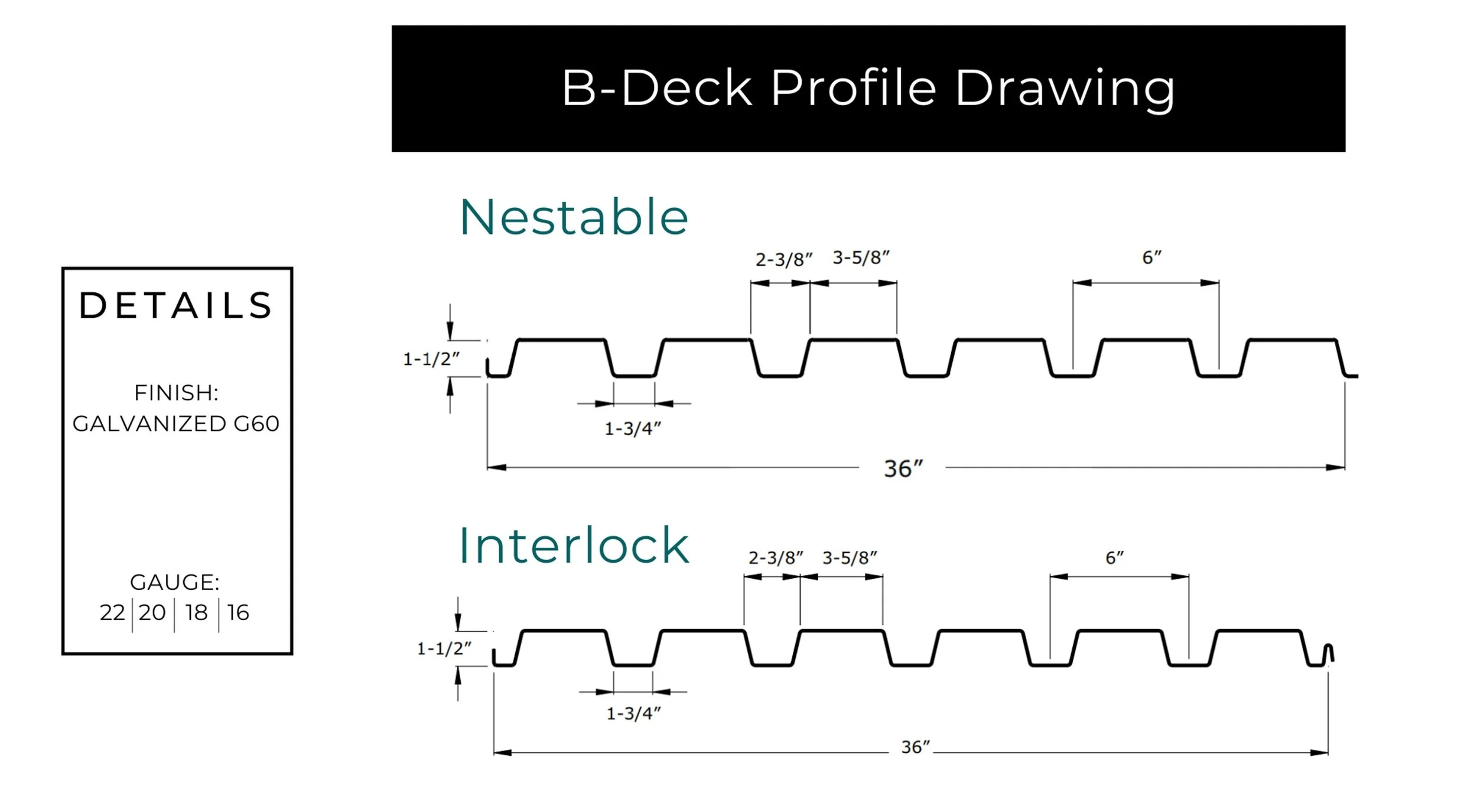What is Metroll B-Deck Roof Profile?
The Metroll B-Deck Roof Profile is designed to provide exceptional strength and durability for roofing projects. Characterized by its deep ribs and strong structural integrity, B-Deck is ideal for use in commercial and industrial settings. It offers a high strength-to-weight ratio, making it an efficient choice for large-scale projects. Key benefits include easy installation, cost-effectiveness, and adaptability to various building requirements.
B-Deck Interlock Profile
The Interlock profile is a specific type of B-Deck designed for enhanced stability and ease of installation. This profile features interlocking edges that insert together.
Advantages:
Stability and Structural Integrity: The interlocking edges ensure that the panels remain securely in place, reducing the risk of displacement.
Ease of Installation: The snap-together design simplifies the installation process, saving time and labor costs.
Applications: The Interlock profile is particularly suitable for projects requiring high structural strength and stability, such as commercial warehouses and industrial facilities.
B-Deck Nestable Profile
The Nestable profile is another variation of the B-Deck, designed for flexibility and versatility. This profile can be easily nested together for storage and transport, making it a practical choice for various projects.
Advantages:
Flexibility and Versatility: The Nestable profile can be used in a wide range of applications, from roofing to flooring.
Applications: The Nestable profile is ideal for projects where cost savings and flexibility are priorities, such as residential buildings and smaller commercial projects.
Key Differences Between Interlock and Nestable Profiles
Structural Differences: The Interlock profile has interlocking edges for added stability, while the Nestable profile is designed for nesting and easy transport.
Installation Process: Interlock profiles snap together easily, making installation quicker, whereas Nestable profiles may require more alignment but offer flexibility in use.
Performance in Various Environments: Interlock profiles perform exceptionally well in high-stress environments, while Nestable profiles are better suited for versatile, multi-use applications.
How They Overlap
Both profiles can be used interchangeably in certain scenarios, depending on the specific needs of the project. For instance, both can be used in commercial roofing projects, but the choice may depend on the required structural integrity versus cost considerations. In environments where both stability and cost-effectiveness are important, a comparative analysis of performance can guide the decision-making process.
Engineering Drawing
The engineering drawing below provides a detailed comparison of the Interlock and Nestable profiles, highlighting their dimensions and specifications. This is essential for engineers and contractors to understand the structural aspects of each profile.
Load Tables
To assist in making an informed decision, the following load table provides detailed performance data for each profile under various conditions. This table is crucial for engineers and contractors to determine the appropriate profile for their specific applications.
Understanding the differences between the B-Deck Interlock and Nestable profiles is essential for choosing the right roofing solution for your project. Both profiles offer unique benefits, and the choice depends on specific project requirements such as structural integrity, cost, and flexibility. By considering these factors, contractors and general users can make informed decisions to achieve optimal results.







